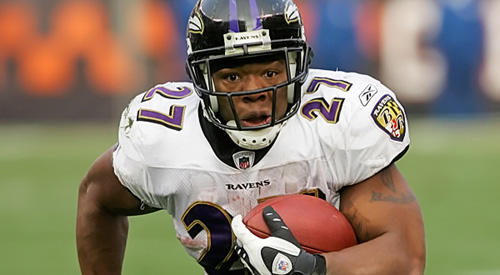
Ravens rise, but don’t assume power shift yet
For much of the last decade, the AFC North has been dominated by the Baltimore Ravens and the Pittsburgh Steelers. The Steelers have been the more prominent of the two, claiming division titles in 2007, 2008 and 2010, advancing to the Super Bowl in 2010 and winning the Lombardi Trophy outright in 2008.
But while the Steelers have been thriving, the Ravens have been nipping closer and closer to their heels, and some will take Baltimore’s decisive 35-7 thumping of the Steelers in Week 1 as proof that the balance of power has finally shifted. It’s too early, of course, to conclude that with any certainty, but it’s worth consideration nonetheless.
Yes, the Ravens’ 35-7 win was emphatic and impressive. They did a lot of things right, and there were plenty of areas where they looked quite promising to start the year. Ray Rice led the way on offense, rushing 19 times for 107 yards and a touchdown and hauling in four catches for 42 yards and another touchdown. He had plenty of help, though; quarterback Joe Flacco finished with 17 completions on 29 attempts for 229 yards and three touchdowns, while Ricky Williams rushed 12 times for 63 yards and Anquan Boldin hauled in four passes for 74 yards and a touchdown.
The Ravens’ revamped offensive line, with Bryant McKinnie brought in at left tackle and Michael Oher shifted to the right side, also did an incredible job of shutting down the Pittsburgh pass rushers and clearing rushing holes for the Baltimore running backs.
[php snippet=1]
It was Baltimore’s defensive showing that was even more notable, however. The Ravens forced seven turnovers, picking off Ben Roethlisberger three times, making him fumble twice more and forcing fumbles from both Mewelde Moore and Rashard Mendenhall. It’s not that they were going all-out and gambling on big plays, either, they also held the Steelers’ overall offensive stats down.
Mendenhall rushed 12 times, but only picked up 45 yards, while Roethlisberger completed just 22 of his 41 attempts for 280 yards and a single touchdown. If Baltimore’s defense can continue to play like that, both forcing turnovers and containing opposing offenses, it could be a very good season for the Ravens.
On the Steelers’ side, there are legitimate concerns. Their vaunted defense didn’t do much Sunday, particularly against the ground game. Their offense struggled to move the chains consistently and turned the ball over far too often. Without improvement, they certainly aren’t anywhere close to the level Baltimore played at in their season opener.
Needless to say, it’s very easy to jump to the wrong conclusions in football, particularly with as such a small sample size as a single game. Anything can happen on any given Sunday, and no matter which way you look at it, each team still has 15 regular season games to play.
Consider the 2010 AFC South, for example. On opening day, the Houston Texans thumped the Indianapolis Colts 34-24, while the Tennessee Titans piled up a dominant 38-13 victory over the Oakland Raiders and the Jacksonville Jaguars edged out the Denver Broncos 24-17. Plenty of pieces were written about a shift in the divisional pecking order, but when the dust cleared at the end of the season, the Colts stood in their typical place atop the division leaderboard with a 12-4 record, while the Jaguars were 8-8 and the Titans and Texans were each 6-10.
But just because it’s too early to officially confirm a shift in division supremacy doesn’t mean that such a dramatic changing of the guard is out of the question altogether. If the Steelers play as poorly as they did in Week 1 all year, it’s tough to see them making the playoffs, much less winning the division. If the Ravens, on the other hand, play as well as they did in their first game of 2011 for the rest of the season, the division may very well be theirs.
Both of those are highly speculative assumptions based on relatively little hard evidence, but at least for the moment, you can certainly argue that the AFC North has a new pecking order.
As long as you’re okay with the fact that it may have several additional new versions before the season ends.
[php snippet=1]

